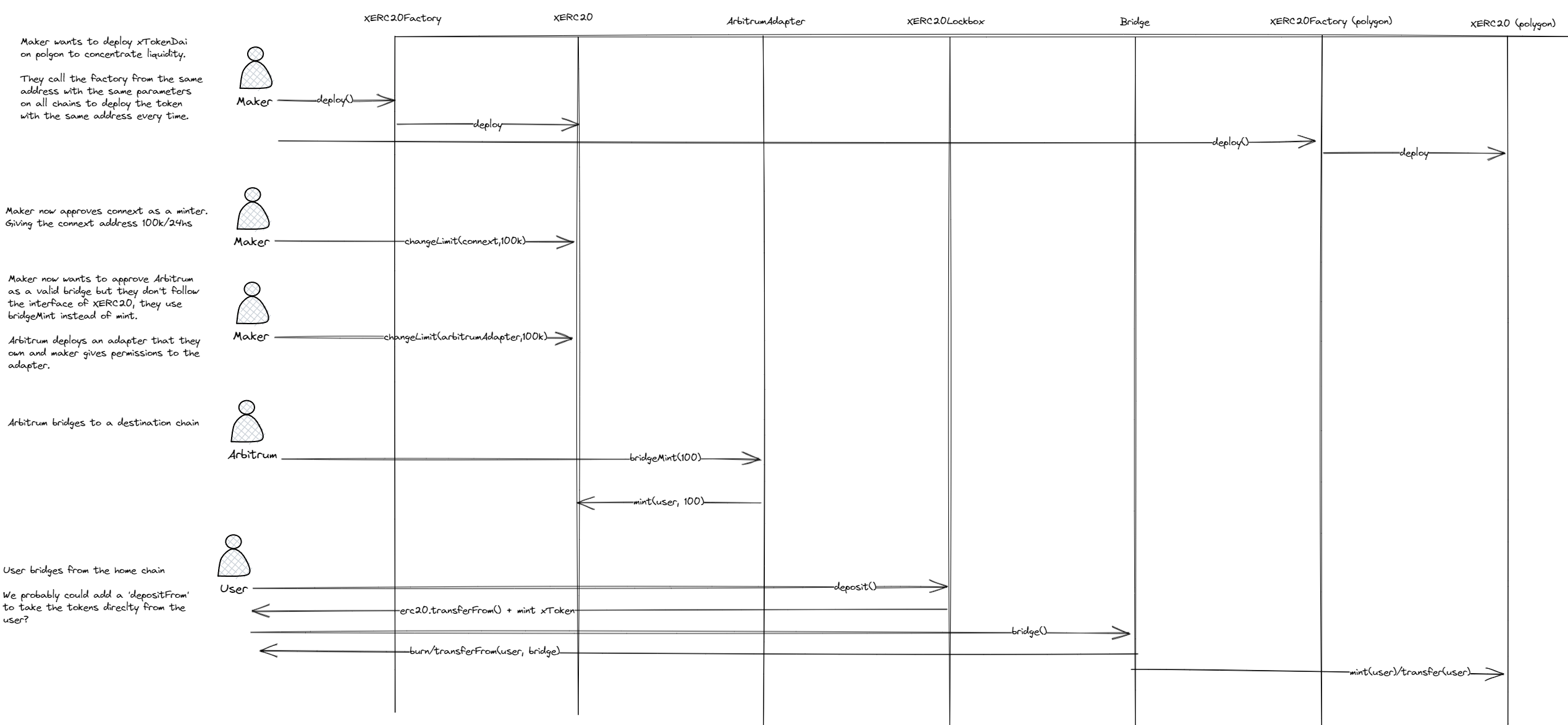xTokens is a standard for bridged tokens. A common interface to be used across different implementations of bridges to keep liquidity concentrated and improve user experience on-chain.
XERC20: The main logic behind the xTokens. XERC20 is a standard for bridges to manage the same liquidity when bridging. It allows its owner to approve bridges and add limits to them for minting and burning the XERC20 token. The XERC20 standard is compatible with two different types of bridge behaviours, bridges calling mint/burn from the user (or other function names through adapters) and bridges that transfer from the user to the bridge contract. On the latter, XERC20 tokens that are received by the bridge get burned and when a bridge transfers tokens out, they get minted again.
XERC20Lockbox: The lockbox works as a wrapper of an ERC20. It mints XERC20 tokens at a 1:1 ratio when receiving ERC20 tokens and it unlocks the ERC20 the other way around. The lockbox can be deployed on any chain that has a canonical token representation, chains that do not currently have a canonical representation can avoid deploying a Lockbox and use the XERC20 as the default implementation for the chain.
XERC20Factory: The factory is used as a helper to deploy an xToken. It allows the owner to deploy the XERC20 and the Lockbox in one transaction while keeping the same token address on every chain used.
*The adapter included is an example into how it would work. Any bridge can build their own.
- Install Foundry by following the instructions from their repository.
- Copy the
.env.examplefile to.envand fill in the variables - Install the dependencies by running :
yarn install && forge install
The default way to build the code is suboptimal but fast, you can run it via:
yarn buildIn order to build a more optimized code (via IR), run:
yarn build:optimizedUnit tests should be isolated from any externalities, while E2E usually run in a fork of the blockchain. In this boilerplate you will find example of both.
In order to run both unit and E2E tests, run:
yarn testIn order to just run unit tests, run:
yarn test:unitIn order to run unit tests and run way more fuzzing than usual (5x), run:
yarn test:unit:deepIn order to just run e2e tests, run:
yarn test:e2eIn order to check your current code coverage, run:
yarn coverage⚠ WARNING: Forge coverage is having some issues...
As stated in this github issue, checking the code coverage with Forge when using abstract contract is not currently working.
Configure the .env variables.
Change the parameters inside the corresponding scripts you are running to deploy your XERC20
You will need to set your custom name and symbol for your XERC20 to be deployed, no need to add an 'x' infront of it, the contract will do that for you.
If you choose to deploy with some bridges to already have permissions to mint/burn you will also have the option to add that, and inside MultichainCreateXERC20.sol you will see notes on how to do so
On line 14 of the MultichainCreateXERC20.sol and line 13 of the MultichainDeploy.sol, you will need to add the names of all the .env variables you would like to deploy to inside the chains array.
- To simulate the deployment of the XERC20Factory you can run
yarn script:DeployFactory- To simulate the deployment of an XERC20 you can run
yarn script:DeployXERC20- To deploy an XERC20 to all the chains you have in the array you can run
yarn script:DeployXERC20:broadcast- To deploy the XERC20Factory to all the chains you have in the array you can run
yarn script:DeployFactory:broadcastThe deployments are stored in ./broadcast
See the Foundry Book for available options.

